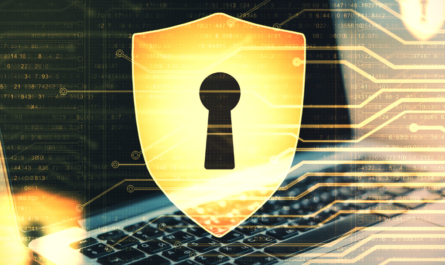In the ever-expanding realm of the digital age, where our lives are intricately woven into the tapestry of technology, the role of antivirus software emerges as a crucial sentinel, standing guard against the perils that lurk in the vast cyber landscape. As we navigate this virtual frontier, the importance of antivirus vigilance cannot be overstated, for it serves as a shield protecting our digital existence from the relentless onslaught of cyber threats.
Understanding the Cyber Landscape:
The digital landscape is a dynamic and interconnected ecosystem where information flows ceaselessly, and transactions unfold in the blink of an eye. However, this interconnectedness is a double-edged sword, offering convenience and efficiency while exposing individuals, businesses, and governments to the ever-present threat of cyberattacks.
Cyber threats manifest in various forms, from the insidious world of malware and ransomware to the stealthy tactics of phishing and social engineering. The cyber landscape is a battlefield where hackers, equipped with sophisticated tools and tactics, seek to exploit vulnerabilities for financial gain, data theft, or even to disrupt critical infrastructures.
Antivirus as the Digital Shield:
At the forefront of our defense against cyber threats stands antivirus software—a digital shield designed to detect, prevent, and eliminate malicious software that can compromise the integrity and security of our digital devices. The role of antivirus extends beyond the traditional concept of viruses to encompass a spectrum of cyber threats, including malware, spyware, adware, and more.
Antivirus programs employ a multifaceted approach to safeguarding digital environments. Signature-based detection involves identifying known patterns of malicious code, while heuristic analysis explores the behavior of files to detect anomalies that may indicate a threat. The continuous evolution of antivirus technologies includes real-time scanning, behavioral analysis, and machine learning algorithms, providing a proactive defense against emerging threats.
The Evolving Nature of Cyber Threats:
As technology advances, so do the tactics of cybercriminals. The threat landscape is in a perpetual state of evolution, with hackers adapting their strategies to exploit new vulnerabilities and bypass traditional security measures. Ransomware attacks, where malicious actors encrypt a victim’s data and demand a ransom for its release, have become increasingly prevalent, targeting individuals, businesses, and even critical infrastructure.
Phishing attacks, often disguised as legitimate communications, aim to deceive individuals into divulging sensitive information such as passwords or financial details. Advanced persistent threats (APTs) involve prolonged and targeted cyber espionage, often orchestrated by state-sponsored actors with the intent to compromise sensitive data.
In this landscape of ever-mutating threats, antivirus software serves as a stalwart guardian, adapting to new attack vectors and fortifying the digital defenses against emerging vulnerabilities.
Protection Beyond Personal Computers:
The digital frontier extends far beyond personal computers, encompassing smartphones, tablets, and other smart devices. The proliferation of Internet of Things (IoT) devices introduces new entry points for cyber threats, emphasizing the need for comprehensive antivirus protection across a diverse range of digital platforms.
Mobile devices, in particular, have become prime targets for cyberattacks. Antivirus solutions tailored for mobile platforms secure these devices against malware, phishing attempts, and other threats that may compromise personal data or infiltrate corporate networks. As our reliance on interconnected devices grows, the role of antivirus expands to provide holistic protection across the entire digital spectrum.
The Human Element in Cyber Defense:
While antivirus software stands as a powerful guardian, the human element remains a critical factor in cyber defense. Cybersecurity awareness and education play a pivotal role in preventing successful cyberattacks. Individuals must be vigilant against social engineering tactics, such as fraudulent emails or deceptive websites, that attempt to exploit human trust and curiosity.
Organizations also play a crucial role in cybersecurity by implementing robust cybersecurity policies, conducting regular training programs, and fostering a culture of cyber awareness among employees. The synergy between human vigilance and technological defenses creates a formidable barrier against the multifaceted threats that populate the digital landscape.
The Business Imperative:
For businesses, the stakes in the cyber landscape are exceptionally high. A successful cyberattack can result in financial losses, reputational damage, and legal ramifications. The integration of antivirus solutions into a comprehensive cybersecurity strategy is not merely a recommendation but a business imperative.
Enterprise-level antivirus solutions offer features tailored for the unique challenges faced by businesses. Endpoint protection, network security, and threat intelligence services work in tandem to fortify the digital perimeter of organizations, ensuring a resilient defense against cyber threats. Regular security audits, penetration testing, and incident response plans further enhance the cybersecurity posture of businesses operating in the digital arena.
Antivirus in the Era of Remote Work:
The paradigm shift towards remote work, accelerated by global events, has introduced new dimensions to the cybersecurity landscape. The dispersal of workforces across diverse locations amplifies the challenges of securing endpoints and maintaining a unified security posture.
Antivirus solutions designed for the era of remote work offer cloud-based management, ensuring seamless updates and consistent protection across distributed environments. Remote work introduces a blend of personal and corporate devices into the digital workspace, necessitating adaptive antivirus measures to safeguard against the diverse array of threats that may target both individual users and organizational networks.
Collaboration and Threat Intelligence:
In the interconnected world of cybersecurity, collaboration and threat intelligence sharing play a pivotal role in staying ahead of emerging threats. Antivirus vendors, cybersecurity researchers, and law enforcement agencies collaborate to analyze and disseminate information about new threats, vulnerabilities, and attack patterns.
Threat intelligence feeds enable antivirus programs to stay updated in real-time, enhancing their ability to detect and mitigate evolving cyber threats. The collaborative effort to share insights and best practices forms a collective defense against cybercriminals who operate on a global scale.
Conclusion: Safeguarding the Digital Realm:
As we traverse the complex and ever-expanding landscape of the digital frontier, the role of antivirus software emerges as an indispensable guardian. It stands as a digital shield, tirelessly defending against an array of cyber threats that seek to compromise the security and integrity of our digital existence.
In a world where the boundary between physical and digital realms blurs, where information is a currency, and where connectivity is omnipresent, the vigilance of antivirus technology becomes synonymous with the preservation of our digital way of life. It is a testament to human ingenuity, adaptability, and collaborative spirit—an embodiment of our collective commitment to navigate the cyber landscape with resilience and unwavering defense. In the realm of digital guardianship, antivirus software stands as a sentinel, ensuring that the digital horizons remain secure and that the promise of the digital age continues to unfold with safety and resilience.
In the ever-expanding realm of the digital age, where our lives are intricately woven into the tapestry of technology, the role of antivirus software emerges as a crucial sentinel, standing guard against the perils that lurk in the vast cyber landscape. As we navigate this virtual frontier, the importance of antivirus vigilance cannot be overstated, for it serves as a shield protecting our digital existence from the relentless onslaught of cyber threats.
Understanding the Cyber Landscape:
The digital landscape is a dynamic and interconnected ecosystem where information flows ceaselessly, and transactions unfold in the blink of an eye. However, this interconnectedness is a double-edged sword, offering convenience and efficiency while exposing individuals, businesses, and governments to the ever-present threat of cyberattacks.
Cyber threats manifest in various forms, from the insidious world of malware and ransomware to the stealthy tactics of phishing and social engineering. The cyber landscape is a battlefield where hackers, equipped with sophisticated tools and tactics, seek to exploit vulnerabilities for financial gain, data theft, or even to disrupt critical infrastructures.
Antivirus as the Digital Shield:
At the forefront of our defense against cyber threats stands antivirus software—a digital shield designed to detect, prevent, and eliminate malicious software that can compromise the integrity and security of our digital devices. The role of antivirus extends beyond the traditional concept of viruses to encompass a spectrum of cyber threats, including malware, spyware, adware, and more.
Antivirus programs employ a multifaceted approach to safeguarding digital environments. Signature-based detection involves identifying known patterns of malicious code, while heuristic analysis explores the behavior of files to detect anomalies that may indicate a threat. The continuous evolution of antivirus technologies includes real-time scanning, behavioral analysis, and machine learning algorithms, providing a proactive defense against emerging threats.
The Evolving Nature of Cyber Threats:
As technology advances, so do the tactics of cybercriminals. The threat landscape is in a perpetual state of evolution, with hackers adapting their strategies to exploit new vulnerabilities and bypass traditional security measures. Ransomware attacks, where malicious actors encrypt a victim’s data and demand a ransom for its release, have become increasingly prevalent, targeting individuals, businesses, and even critical infrastructure.
Phishing attacks, often disguised as legitimate communications, aim to deceive individuals into divulging sensitive information such as passwords or financial details. Advanced persistent threats (APTs) involve prolonged and targeted cyber espionage, often orchestrated by state-sponsored actors with the intent to compromise sensitive data.
In this landscape of ever-mutating threats, antivirus software serves as a stalwart guardian, adapting to new attack vectors and fortifying the digital defenses against emerging vulnerabilities.
Protection Beyond Personal Computers:
The digital frontier extends far beyond personal computers, encompassing smartphones, tablets, and other smart devices. The proliferation of Internet of Things (IoT) devices introduces new entry points for cyber threats, emphasizing the need for comprehensive antivirus protection across a diverse range of digital platforms.
Mobile devices, in particular, have become prime targets for cyberattacks. Antivirus solutions tailored for mobile platforms secure these devices against malware, phishing attempts, and other threats that may compromise personal data or infiltrate corporate networks. As our reliance on interconnected devices grows, the role of antivirus expands to provide holistic protection across the entire digital spectrum.
The Human Element in Cyber Defense:
While antivirus software stands as a powerful guardian, the human element remains a critical factor in cyber defense. Cybersecurity awareness and education play a pivotal role in preventing successful cyberattacks. Individuals must be vigilant against social engineering tactics, such as fraudulent emails or deceptive websites, that attempt to exploit human trust and curiosity.
Organizations also play a crucial role in cybersecurity by implementing robust cybersecurity policies, conducting regular training programs, and fostering a culture of cyber awareness among employees. The synergy between human vigilance and technological defenses creates a formidable barrier against the multifaceted threats that populate the digital landscape.
The Business Imperative:
For businesses, the stakes in the cyber landscape are exceptionally high. A successful cyberattack can result in financial losses, reputational damage, and legal ramifications. The integration of antivirus solutions into a comprehensive cybersecurity strategy is not merely a recommendation but a business imperative.
Enterprise-level antivirus solutions offer features tailored for the unique challenges faced by businesses. Endpoint protection, network security, and threat intelligence services work in tandem to fortify the digital perimeter of organizations, ensuring a resilient defense against cyber threats. Regular security audits, penetration testing, and incident response plans further enhance the cybersecurity posture of businesses operating in the digital arena.
Antivirus in the Era of Remote Work:
The paradigm shift towards remote work, accelerated by global events, has introduced new dimensions to the cybersecurity landscape. The dispersal of workforces across diverse locations amplifies the challenges of securing endpoints and maintaining a unified security posture.
Antivirus solutions designed for the era of remote work offer cloud-based management, ensuring seamless updates and consistent protection across distributed environments. Remote work introduces a blend of personal and corporate devices into the digital workspace, necessitating adaptive antivirus measures to safeguard against the diverse array of threats that may target both individual users and organizational networks.
Collaboration and Threat Intelligence:
In the interconnected world of cybersecurity, collaboration and threat intelligence sharing play a pivotal role in staying ahead of emerging threats. Antivirus vendors, cybersecurity researchers, and law enforcement agencies collaborate to analyze and disseminate information about new threats, vulnerabilities, and attack patterns.
Threat intelligence feeds enable antivirus programs to stay updated in real-time, enhancing their ability to detect and mitigate evolving cyber threats. The collaborative effort to share insights and best practices forms a collective defense against cybercriminals who operate on a global scale.
Conclusion: Safeguarding the Digital Realm:
As we traverse the complex and ever-expanding landscape of the digital frontier, the role of antivirus software emerges as an indispensable guardian. It stands as a digital shield, tirelessly defending against an array of cyber threats that seek to compromise the security and integrity of our digital existence.
In a world where the boundary between physical and digital realms blurs, where information is a currency, and where connectivity is omnipresent, the vigilance of antivirus technology becomes synonymous with the preservation of our digital way of life. It is a testament to human ingenuity, adaptability, and collaborative spirit—an embodiment of our collective commitment to navigate the cyber landscape with resilience and unwavering defense. In the realm of digital guardianship, antivirus software stands as a sentinel, ensuring that the digital horizons remain secure and that the promise of the digital age continues to unfold with safety and resilience.




